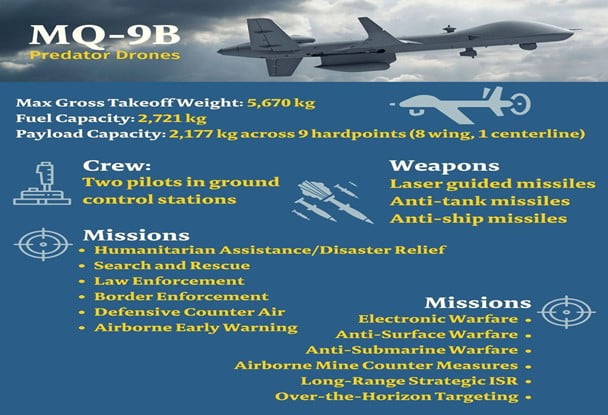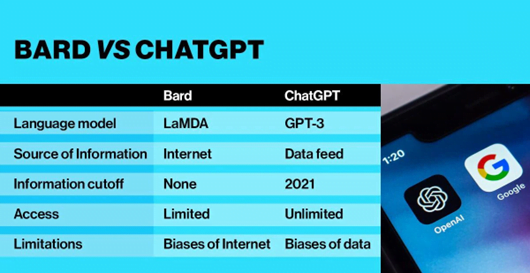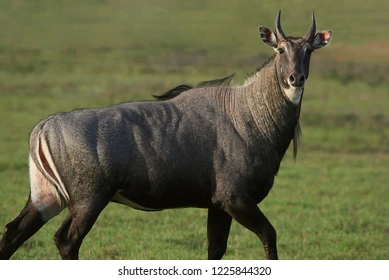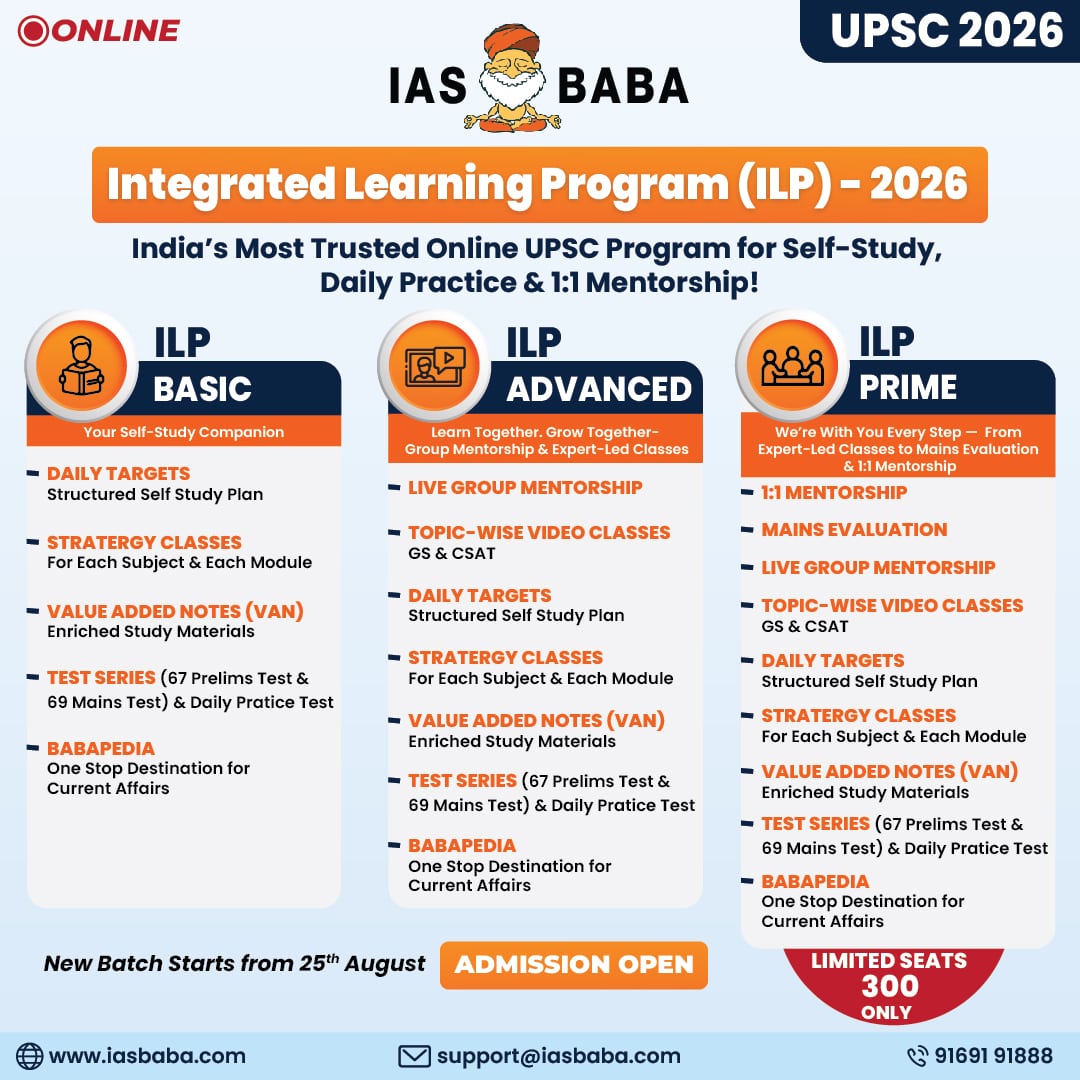IASbaba's Daily Current Affairs Analysis
Archives
(PRELIMS & MAINS Focus)
Syllabus
- Prelims – Economy
Context: The Union Budget has announced for computerization of Primary Agricultural Credit Societies (PACS) over the next five years.
About PACS:
- PACS are village level cooperative credit societies that serve as the last link in a three-tier cooperative credit structure headed by the State Cooperative Banks (SCB) at the state level.
Financial Structure:
- The primary credit societies’ working capital is derived from their own funds, deposits, borrowings, and other sources.
- Deposits are made by both members and non-members.
- Borrowings are primarily made from central cooperative banks.
- Credit from the Scheduled Commercial Banks is transferred to the district central cooperative banks, or DCCBs, that operate at the district level.
- The DCCBs work with PACS, which deal directly with farmers.
- PACS are involved in short term lending — or what is known as crop loan.
- At the start of the cropping cycle, farmers avail credit to finance their requirement of seeds, fertilizers etc.
- Banks extend this credit at 7 percent interest, of which 3 per cent is subsidized by the Centre, and 2 per cent by the state government.
- Effectively, farmers avail the crop loans at 2 percent interest only.
Organizational Structure:
- Since these are cooperative bodies, individual farmers are members of the PACS, and office-bearers are elected from within them.
- The membership fee is low enough that even the poorest agriculturist can join.
- A village can have multiple PACS.
Source: Indian Express
Previous Year Question
Q.1) Consider the following statements:
- In terms of short-term credit delivery to the agriculture sector, District Central Cooperative Banks (DCCBs) deliver more credit in comparison to Scheduled Commercial Banks and Regional Rural Banks.
- One of the most important functions of DCCBs is to provide funds to the Primary Agricultural Credit Societies.
Which of the statements given above is/are correct? (2020)
- 1 only
- 2 only
- Both 1 and 2
- Neither 1 nor 2
Q.2) Under the Kisan Credit Card scheme, short-term credit support is given to farmers for which of the following purposes ? (2020)
- Working capital for maintenance of farm assets harvesters,
- Purchase of combine tractors and mini trucks requirements of farm
- Consumption households
- Post-harvest expenses
- Construction of family house and setting up of village cold storage facility
Select the correct answer using the code given below:
- 1, 2 and 5 only
- 1, 3 and 4 only
- 2,3,4 and 5 only
- 1, 2, 3, 4 and 5
Syllabus
- Prelims – Science and Technology
Context: India and the United States are keen for an early conclusion of the 30 MQ-9B predator armed drones deal at a cost of over $3 billion.
About MQ-9B predator Drone:
- The MQ-9B predator-armed drones — 10 each for three services — is seen to be a key part of India’s national security and defence needs.

Source: The Hindu
Previous Year Questions
Q.1) The experiment will employ a trio of spacecraft flying in formation in the shape of an equilateral triangle that has sides one million kilometers long, with lasers shining between the craft.” The experiment in question refers to (2020)
- Voyager-2
- New Horizons
- LISA Pathfinder
- Evolved LISA
Q.2) Recently, scientists observed the merger of giant ‘blackholes’ billions of light-years away from the earth. What is the significance of this observation?
- ‘Higgs boson particles’ were detected.
- ‘Gravitational waves’ were detected.
- Possibility of intergalactic space travel through ‘wormhole’ was confirmed.
- It enabled the scientists to understand ‘singularity’.
Syllabus
- Prelims – Science and Technology
Context: Recently, the researchers have said that India’s first indigenously developed Chimeric Antigen Receptor (CAR)-T Cell T therapy for specific types of cancer.
About CART-T cell therapy:

- Chimeric antigen receptor (CAR) T-cell therapies represent a quantum leap in the sophistication of cancer treatment.
- Unlike chemotherapy or immunotherapy, which require mass-produced injectable or oral medication, CAR T-cell therapies use a patient’s own cells.
- They are modified in the laboratory to activate T-cells, a component of immune cells, to attack tumors.
- These modified cells are then infused back into the patient’s bloodstream after conditioning them to multiply more effectively.
How does the therapy work?
- In CAR T-cell therapy, the patient’s blood is drawn to harvest T-cells which are immune cells that play a major role in destroying tumor cells.
- Researchers modify these cells in the laboratory so that they express specific proteins on their surface, known as chimeric antigen receptors (CAR).
- They have an affinity for proteins on the surface of tumor cells.
- This modification in the cellular structure allows CAR T-cells to effectively bind to the tumor and destroy it.
- The final step in the tumor’s destruction involves its clearance by the patient’s immune system.
Source: The Hindu
Previous Year Questions
Q.1) Which one of the following statements best describes the role of B cells and T cells in the human body? (2022)
- They protect the environmental allergens. body
- They alleviate the body’s pain and inflammation.
- They act as immunosuppressants in the body.
- They protect the body from the diseases caused by pathogens.
Q.2) With reference to recent developments regarding ‘Recombinant vector Vaccines’, consider the following statements:
- Genetic engineering is applied in the development of these vaccines.
- Bacteria and viruses are used as vectors.
Which of the statements given above is/are correct? (2021)
- 1 only
- 2 only
- Both 1 and 2
- Neither 1 nor 2
Syllabus
- Prelims – Science and Technology
Context: Google showcased its latest work artificial intelligence (AI) as part of an event that was livestreamed on YouTube.
About Google’s Bard:

- Bard is Google’s own conversational AI chatbot and is based on LaMDA.
- It draws on information from the web to provide fresh, high-quality responses.
- In short, it will give in-depth, conversational and essay-style answers just like ChatGPT does right now.
- A user will be able to ask Bard to explain new discoveries from NASA’s James Webb Space Telescope to a 9-year-old, or learn more about the best strikers in football right now, and then get drills to build your skills.
- Bard is built on Transformer technology – which is also the backbone of ChatGPT and other AI bots.
- Transformer technology, pioneered by Google and made open-source in 2017, is a neural network architecture, which is capable of making predictions based on inputs.
- Currently, Bard looks like a limited rollout and it is hard to say whether it can answer more questions than ChatGPT.
- Google has also not made clear the amount of knowledge that Bard possesses.
- For instance, with ChatGPT, we know its knowledge is limited to events till 2021.
Source: Indian Express
Previous Year Questions
Q.1) With reference to Web 3.0, consider the following statements:
- Web 3.0 technology enables people to control their own data.
- In Web 3.0 world, there can be blockchain based social networks.
- Web 3.0 is operated by users collectively rather than a corporation
Which of the following given above are correct? (2022)
- 1 and 2 only
- 2 and 3 only
- 1 and 3 only
- 1, 2 and 3
Q.2) With reference to “Software as a Service (SaaS)”, consider the following statements:
- SaaS buyers can customize the user interface and can change data fields.
- SaaS users can access their data through their mobile devices.
- Outlook, Hotmail and Yahoo! Mail are forms of SaaS.
Which of the statements given above are correct? (2022)
- 1 and 2 only
- 2 and 3 only
- 1 and 3 only
- 1, 2 and 3
Syllabus
- Prelims – Environment and Ecology
Context: According to recent studies the Cape Buffalo populations were less genetically variable or diverse in the extreme southern part of their range. This means that there had been more interbreeding among them.
About the Cape Buffalo/ Southern Savanna Buffalo:

- African buffalo occur in Sub-Saharan Africa.
- They prefer a habitat with dense cover, such as reeds and thickets, but can also be found in open woodland, montane grasslands and forest, savannas, and moist lowland rainforests.
- During the dry season, males leave the herd and form, bachelor groups. Two types of bachelor herds occur: ones made of males aged 4 to 7 years and those of males 12 years or older.
- During the wet season, the younger bulls rejoin a herd to mate with the females. They stay with them throughout the season to protect the calves.
- African buffalo have a strictly herbivorous (graminivorous, florivorous) diet.
- They feed on a wide variety of grasses, sedges, leaves, and other plants.
- African buffalo are polygynandries (promiscuous) meaning that both males and females’ mate with multiple partners.
- They mate and give birth only during the rainy seasons.
- Cows usually reproduce every two years.
- They give birth to a single calf after a gestation period of 11.5 months.
- Males become reproductively mature when they are 4 to 6 years old.
- IUCN Red list: Near Threatened (NT)
Source: DownToEarth
Previous Year Questions
Q.1) Consider the following animals
- Hedgehog
- Marmot
- Pangolin
To reduce the chance of being captured by predators, which of the above organisms rolls up/roll up and protects/protect its/their vulnerable parts? (2021)
- 1 and 2
- 2 only
- 3 only
- 1 and 3
Q.2) With reference to India’s biodiversity, Ceylon Frogmouth, Coppersmith Barbet, Gray Chinned Minivet and White-throated Redstart are (2020)
- Birds
- Primates
- Reptiles
- Amphibians
Syllabus
- Prelims – Geography and Economy
Context: According to the Indian Sugar Mills’ Association (ISMA), sugar production in the current season (October 2022 to September 2023) is slightly lower than the last year’s production.
About Sugarcane crop:
- India is the second largest producer of sugarcane after Brazil.
- It is the main source of sugar, Gur (jaggery), khandsari and molasses.
- It is a tropical and perennial grass which attains a length of 10 to 20 feet.
- A single plant of sugarcane has ‘many stems’ in a tuft.
- Modern Sugar making was introduced in India probably by Dutch.
- The first Sugar Mill was started in Bihar in 1903; followed by another unit in 1904 in Uttar Pradesh.
Suitable Conditions:
- Temperature: Between 21-27°C with hot and humid climate.
- Rainfall: Around 75-100 cm.
- Soil Type: Deep rich loamy soil.
- Top Sugarcane Producing States: Uttar Pradesh, Maharashtra, Karnataka, Tamil Nadu, Bihar.
- It can be grown on all varieties of soils ranging from sandy loam to clay loam given these soils should be well drained.
- It needs manual labour from sowing to harvesting.
About Indian Sugar Mills Association (ISMA):
- Indian Sugar Mills Association (ISMA) is a premier sugar organization in India.
- It is the interface between Government and sugar industry (both private and public sugar mills) in the country.
- The prime objective is to ensure that the functioning and interest of both the private and public sugar mills in the country are safeguarded through conducive and growth-oriented policies of the Government.
- ISMA is the oldest industrial Association in the country which was established in 1932.
- ISMA is recognized by both the Central Government and State Governments as the apex sugar body in the country, to voice the concerns of the private sugar mills and the sugar industry as a whole.
Source: The Hindu
Previous Year Questions
Q.1) Among the following crops, which one is the most important anthropogenic source of both methane and nitrous oxide ? (2022)
- Cotton
- Rice
- Sugarcane
- Wheat
Q.2) Which of the following are nitrogen-fixing plants? (2022)
- Alfalfa
- Amaranth
- Chickpea
- Clover
- Purslane (Kulfa)
- Spinach
Select the correct answer using the code given below:
- 1, 3 and 4 only
- 1, 3, 5 and 6 only
- 2, 4, 5 and 6 only
- 1, 2, 4, 5 and 6
Syllabus
- Prelims – Environment
Context: The Wildlife Institute of India (WII) is working to develop immuno-contraceptive measures for population management of species that have become problematic for humans in many parts of the country.
About WII:
- It is an autonomous institution under the Ministry of Environment, Forest and Climate Change.
- It was established in 1982.
- It is based in Dehradun, Uttarakhand.
- It offers training programs, academic courses, and advisory in wildlife research and management.
About Nilgai antelope:

- It is the largest Asian antelope (family Bovidae).
- The nilgai is indigenous to the Indian subcontinent, and Hindus accord it the same sacred status as cattle (both belong to the subfamily Bovine).
- Description: Nilgai is the Hindustani word for “blue cow,” which describes the blue-grey of adult bulls.
- It has a long neck with a short upright mane, a bony narrow head, a barrel-like chest, strong legs, and high withers sloping back to the croup.
- Habitat: It lives in a lightly wooded forest, wooded grassland, scrub areas and agricultural areas and human settlements. Blue Bull usually avoids dense Forests.
- Threats: It is seldom killed or injured in retaliation in response to crop-raiding.
- The major threat to this species is habitat loss and degradation due to human encroachment, clearing of forest for agriculture and over-grazing of livestock in their habitats.
- Conservation Status:
- The IUCN Red List of Threatened Species listed it as Least Concern.
- It enjoys legal protection by virtue of the species having been included in Schedule-III of the Wildlife (Protection) Act, 1972.
Source: DownToEarth
Previous Year Questions
Q.1) Which of the following is not a bird? (2022)
- Golden Mahseer
- Indian Nightjar
- Spoonbill
- White Ibis
Q.2) Consider the following animals
- Hedgehog
- Marmot
- Pangolin
To reduce the chance of being captured by predators, which of the above organisms rolls up/roll up and protects/protect its/their vulnerable parts? (2021)
- 1 and 2
- 2 only
- 3 only
- 1 and 3
Syllabus
- Mains – History and Art and Culture
Context: Salman Rushdie’s latest work, “Victory City” is a fictionalized telling of the story of Vijayanagara, one of the richest and most powerful kingdoms in medieval India.
About Vijayanagara Empire:
- The Vijayanagara Empire, also called Karnata Kingdom, was based in the Deccan Plateau region in South India.
- It was established in 1336 by the brothers Harihara I and Bukka Raya I of the Sangama dynasty, members of a pastoralist cowherd community that claimed Yadava lineage.


- At its peak, it subjugated almost all of South India’s ruling families and pushed the sultans of the Deccan beyond the Tungabhadra-Krishna River doab region, in addition to annexing modern day Odisha (ancient Kalinga) from the Gajapati Kingdom thus becoming a notable power.
- It lasted until 1646, although its power declined after a major military defeat in the Battle of Talikota in 1565 by the combined armies of the Deccan sultanates.
- The empire is named after its capital city of Vijayanagara, whose ruins surround present day Hampi, now a World Heritage Site in Karnataka, India.
Economy conditions during Vijayanagara kingdom:
- The economy of the kingdom was largely dependent on agriculture, and trade thrived in its many ports on either coast.
- The empire’s principal exports were pepper, ginger, cinnamon, cardamom, myrobalan, tamarind timber, ana fistula, precious and semi-precious stones, pearls, musk, ambergris, rhubarb, aloe, cotton cloth, and porcelain.
- Abd al-Razzaq Samarqand chronicled the high degree of monetization in the Vijayanagara kingdom.
- In his classic History of South India, K A Nilakanta Sastri wrote that coins were minted by the state as well as by merchant guilds using gold, silver, copper, and brass, and their value depended on material weight.
Governance:
- The rulers of the Vijayanagara Empire maintained the administrative methods developed by their predecessors, the Hoysala, Kakatiya and Pandya kingdoms.
- The King, ministry, territory, fort, treasury, military, and ally formed the seven critical elements that influenced every aspect of governance.
- The King was the ultimate authority, assisted by a cabinet of ministers (Pradhana) headed by the prime minister (Mahapradhana).
- Other important titles recorded were the chief secretary (Karyakartha or Rayaswami) and the imperial officers (Adhikari).
- All high-ranking ministers and officers were required to have military training.
- A secretariat near the king’s palace employed scribes and officers to maintain records made official by using a wax seal imprinted with the ring of the king.
Religious belief system:
- The Vijayanagara kings were tolerant of all religions and sects, as writings by foreign visitors show.
- The kings used titles such as Gobrahamana Pratipalanacharya (literally, “protector of cows and Brahmins”) that testified to their intention of protecting Hinduism.
- Yet at the same time adopted Islamicate court ceremonies, dress, and political language, as reflected in the title Hindu-rāya-suratrāṇa.
- The empire’s founders, the Sangama brothers (Harihara I and Bukka Raya I) came from a pastoral cowherd background (the Kuruba people) that claimed Yadava lineage.
- The founders of the empire were devout Shaivas (worshippers of the god Shiva) but made grants to Vishnu temples.
- Their patron saint Vidyaranya was from the Advaita order at Sringeri.
- The Varaha (the boar, an Avatar of Vishnu) was the emblem of the empire.
- Over one-fourth of the archaeological dig found an “Islamic Quarter” not far from the “Royal Quarter”.
- A Sanskrit work, Jambavati Kalyanam by King Krishnadevaraya, refers to Lord Virupaksha as Karnata Rajya Raksha Mani or “protective jewel of Karnata Empire”.
Contribution to Literature:
- During the rule of the Vijayanagara Empire, poets, scholars and philosophers wrote primarily in Kannada, Telugu and Sanskrit.
- The administrative and court languages of the Empire were Kannada and Telugu, the latter gained even more cultural and literary prominence during the reign of the last Vijayanagara kings, especially Krishnadevaraya.
- Most Sanskrit works were commentaries either on the Vedas or on the Ramayana and Mahabharata epics, written by well-known figures such as Sayanacharya and Vidyaranya that extolled the superiority of the Advaita philosophy over other rival Hindu philosophies.
- Other writers were famous Dvaita saints of the Udupi order such as Jayatirtha (earning the title Tikacharya for his polemicial writings), Vyasatirtha who wrote rebuttals to the Advaita philosophy and of the conclusions of earlier logicians, and Vadirajatirtha and Sripadaraya both of whom criticized the beliefs of Adi Sankara.
Contributions to culture and architecture:
- Vijayanagara has been remembered as an era of “cultural conservatism”, when classical forms of Hinduism were preserved amidst the growing Islamization of the rest of the subcontinent, especially the North.
- Literature in Tamil, Telugu, Kannada, as well as Sanskrit, was produced in the kingdom, with new writing styles and methods emerging.
- According to art historian Percy Brown, Vijayanagara architecture is “a vibrant combination and blossoming of the Chalukya, Hoysala, Pandya, and Chola styles, idioms that prospered in previous centuries.”
- The Prasanna Virupaksha temple of Bukka I and many of the great monuments of the empire date from Krishna Deva Raya’s time.
- Among these are the Hazara Rama temple, the Krishna temple, and the Ugra Narasimha idol, all at Vijayanagara.
- They are striking examples of Vijayanagar’s characteristic style and intricate artistry.
- Vijayanagara’s capital Hampi is a UNESCO World Heritage Site, known for its sophisticated fortifications as well as innumerable temples and other architectural marvels.
Source: Indian Express
Previous Year Questions
Q.1) With reference to Indian history, who of the following were known as “Kulah-Daran” ? (2022)
- Arab merchants
- Qalandars
- Persian calligraphists
- Sayyids
Q.2) According to Portuguese writer Nuniz, the women in the Vijayanagara empire were expert in which of the following areas? (2021)
- Wrestling
- Astrology
- Accounting
- Soothsaying
Select the correct answer using the code given below:
- 1, 2 and 3 only
- 1, 3 and 4 only
- 2 and 4 only
- 1, 2, 3 and 4
Practice MCQs
Q.1) With reference to medieval Indian history, consider the following statements:
- The economy of the kingdom was largely dependent on agriculture
- It was established by Harihara I and Bukka Raya I of the Sangama dynasty
- The administrative and court languages of the Empire were Sanskrit and Tamil
Which of the statements given above are correct?
- 1 and 2 only
- 2 and 3 only
- 1 and 3 only
- 1 2 and 3
Q.2) Consider the following statements regarding Wildlife Institute of India:
- It is an autonomous institution under the Department of Animal husbandry and Dairying
- It offers training programs, academic courses, and advisory in wildlife research and management.
Which of the statements given above is/are correct?
- 1 only
- 2 only
- Both 1 and 2
- Neither 1 nor 2
Q.3) Which of the following statements regarding Primary Agricultural Credit Societies (PACS) is/are correct?
- Deposits can be made by members of the PACS only
- Individual farmers can become members of the PACS
- The membership fee is low enough that even the poorest agriculturist can join
Select the correct answer using the code given below:
- 1 and 2 only
- 2 only
- 3 only
- 2 and 3 only
Comment the answers to the above questions in the comment section below!!
ANSWERS FOR ’ 10th February 2023 – Daily Practice MCQs’ will be updated along with tomorrow’s Daily Current Affairs.st
ANSWERS FOR 9th February – Daily Practice MCQs
Q.1) – b
Q.2) – d
Q.3) – a












